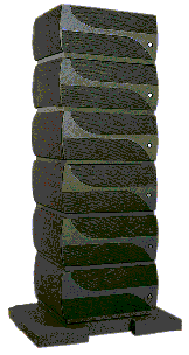[Table of Contents]
[Previous Section]
[Next Section]
Problem/Solution Statement
The Problem
Data processing requirements will continue
to grow for the foreseeable future, yet staff and financial resources
for DBMS applications and support will continue to be stretched
thin. Managers are awash in data that they need to use in a variety
of ways to maintain their competitive advantage. DBMS systems
and tools must quickly evolve to manage the forthcoming data explosion.
The Solution
The obvious solution to the problems facing today's DBMS managers
is to use a central "industrial strength" data storage
facility such as that provided by a relational DBMS (RDBMS), but
one which extends the relational model to incorporate additional
data types and operators. This is precisely what THOR has implemented
in its Object Relational Database (ORDBMS) model.
The Major Issues
THOR™ addresses four major issues currently facing DBMS managers
and administrators:
- Overcoming performance barriers
- Controlling costs
- Supporting new data types such as pictures, movies, and sounds
- Moving toward data warehouse implementations
Overcoming performance barriers
Current OLTP implementations are reaching performance barriers.
Systems cannot scale beyond a certain point, and performance barriers
are being reached.
Controlling costs
Achieving maximum value for money spent is critical. Budgets are
not growing as fast as performance requirements. As data processing
requirements expand, systems need to scale appropriately.
Supporting new data types
New and more complex data types are becoming increasingly important
in data processing environments. Managers need to query and report
on non-traditional data using the same management tools available
to work with traditional data types.
The changing data processing
trend
The competitive power of complex query applications is no longer
in doubt. Though they go by many names, including DSS (Decision
Support System), Data Warehousing, Data Marts, OLAP (Online Application
Processing), Data Mining, etc., these applications are rapidly
becoming indispensable to any world-class enterprise. Data sets
are growing significantly, requiring more processing power than
many current OLTP implementations.
OLTP and DSS/OLAP differences
Introduction
There are three fundamental differences between OLTP and DSS/OLAP
systems:
- Some data warehouses are far larger than the databases common
in OLTP.
- OLAP consists of queries that are more complex than OLTP queries.
- Not all forms of data fit neatly into the SQL tables common
in OLTP applications.
Larger databases
Some data warehouses are far larger than the databases common
in OLTP, and the data to be analyzed are growing faster than processor
power is increasing. Symmetric Multi-Processing (SMP) systems
that easily handle large OLTP applications cannot scale fast enough
to grow as data warehouse applications will, and are reaching
performance limits.
More complex queries
OLAP consists of queries that are more complex than OLTP queries.
Complex queries are much harder to parallelize than the simple
atomic transactions of OLTP. Parallel systems engineered for OLTP
and SMP systems can falter under the load imposed by complex queries.
Non-traditional data types and operators
Not all forms of data fit neatly into the SQL tables common in
OLTP applications. Today's vastly increased system capability
has made possible a broad range of business applications. Data
warehouses must increasingly house data that doesn't fit the traditional
models of numbers or text, such as: time series data in the finance
industry; geographic data in many industries; and pictures, images,
video and sound in Intranet and Internet applications.
The limitations of the relational model have become a significant
problem for a new generation of applications. Work is underway
in the SQL language standards community to address these market
requirements in the SQL3 standard, but this will not be ratified
before 1998 at the earliest. Customers are demanding relief before
then.
THOR's Object-Relation model meets the criteria
for a real solution
Introduction
THOR's unique ORDBMS design addresses
all the issues discussed to this point. But no matter how elegantly
designed or how highly optimized for speed, a solution isn't a
solution if it doesn't meet other basic criteria. Specifically,
DBMS managers and administrators need a solution that is easy
to administer, scaleable, extensible, and open.
Easy to administer
THOR reduces the system administrator's burdens of tuning the
databases, optimizing queries, and partitioning distributed data,
performing these tasks with significantly less manual intervention
than current systems require. THOR also incorporates a number
of RAS (Reliability, Availability, and Serviceability) features
to ensure minimal down time and rapid recovery from system problems.
Scaleable
THOR lets you "rightsize" your hardware as your processing
requirements grow, increasing processing speed almost linearly
as new processors are added.
Extensible
THOR has an object-oriented foundation, making it easy to support
new data types and data operators. At the same time, THOR works
with your existing SQL-based RDBMS, enabling you to build object
support on top of (rather than in place of) your current implementation.
Open
THOR uses existing tools and applications and leverages current
RDBMS investment to the greatest extent possible.
Only one database system meets all these criteria -
THOR
 THOR Tower configuration
THOR Tower configuration
[Table of Contents]
[Previous Section]
[Next Section]

